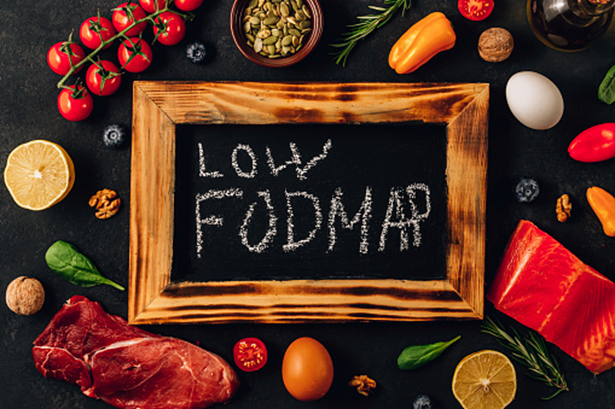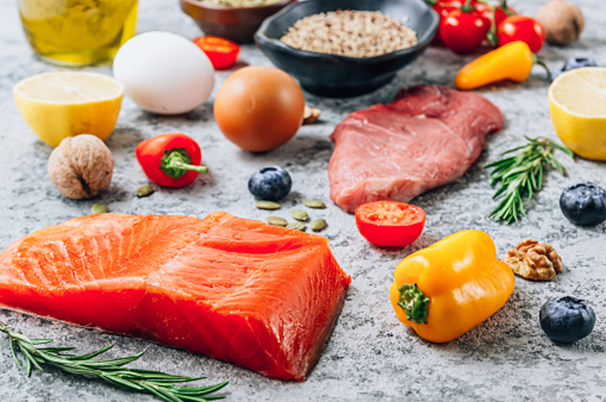
Never Heard of the Low-FODMAP Diet?
Following the low FODMAP diet means eliminating foods that are high in specific fermentable carbohydrates.
FODMAP stands for Fermentable Oligosaccharides, Disaccharides, Monosaccharides and Polyols. In some people, these types of carbohydrates can cause digestive distress such as bloating, gas, stomach pain, constipation and/or diarrhea.
The concept of FODMAPs was first introduced as part of a hypothesis paper published in 2005 in the Journal of Alimentary Pharmacology & Therapeutics. In this paper, the authors proposed that by reducing these carbohydrates, the previously mentioned symptoms could be minimized. The low-FODMAP diet was developed as part of a research study conducted by scientists at Monash University. Their research is ongoing.

How Does This Diet Work?
The low FODMAP diet is an elimination diet. There are three phases involved in the process:
1) Restriction Phase: Stop eating all high-FODMAP foods for 2-6 weeks in order to allow your symptoms to resolve.
2) Reintroduction Phase: Slowly reintroduce foods (one new food within a category every 3 days is recommended), note any changes in symptoms.
3) Personalization Phase: Once you know which foods cause your symptoms to flare up or become more severe, you know to avoid these foods (and only these foods) long term. It is worth noting that foods that trigger symptoms will likely vary from person to person.
So What Can You Eat?
Consult with a registered dietitian nutritionist before starting a low FODMAP diet, especially considering the challenges encountered as part of the restriction phase. A registered dietitian can help you to figure out how to change your specific diet while also maintaining proper nutrition throughout the process. Some common low FODMAP foods are listed below. Refer to the Monash University FODMAP Diet App for a more comprehensive list.
- Grains: gluten-free grains (rice products, oat products, potato products, corn products)
- Protein Sources: unseasoned poultry, unseasoned fish, unseasoned beef, unseasoned pork, bacon, eggs, tofu
- Dairy: lactose-free products, rice milk, soy milk, hard/aged/ripened cheeses (brie, Camembert, cheddar, feta)
- Fruits: grapes, oranges, bananas, blueberries, pineapple, cantaloupe, honeydew, kiwi, lemons, limes
- Vegetables: cucumbers, potatoes, tomatoes, eggplant, zucchini, squash, pumpkin, green beans, lettuce, spinach
- Other: most teas & coffees, basil, coriander, parsley, rosemary, thyme, ginger, turmeric, most condiments (except those with high fructose corn syrup), sweeteners not ending in ”-ol”

Is There an Alternative to Avoiding These Foods Completely?
Supplementing specific enzymes to help the body to break down FODMAPs is a possible solution. Studies on these enzymes have been limited so far. For an individual following the low FODMAP diet, elimination of the trigger foods has proven to reduce symptoms in up to 86% of people. In many cases, a combination of dietary changes (such as the low-FODMAP diet), medications, and stress management techniques is often the best approach.

So Is the Low-FODMAP Diet the Key to Weight Loss?
To put it simply, no. Even though you may lose weight on the low-FODMAP diet because you have eliminated so many foods, it is certainly not the key to weight loss. There is no need to restrict your diet in these specific ways if you are not experiencing symptoms of digestive distress. If you are following this diet unnecessarily, it may do more harm than good. Many high FODMAPs foods are prebiotics that support gut health and offer major dietary sources of essential vitamins and minerals. If you believe that the low-FODMAP diet is right for you, consult with a registered dietitian nutritionist to determine if it is a good option.
Madalyn Fiorillo is currently a first-year student in the Nutrition Science M.A. program at Syracuse University. She previously earned her bachelor’s degree in dietetics from SUNY Oneonta. It is her goal to become a registered dietitian nutritionist in the future.






